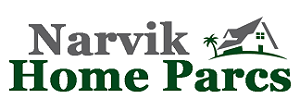The Ultimate Guide to Waterproof Coating: Types & Applications

Water damage threatens any building, leading to expensive fixes, weakening structures, and causing health problems like mould. Good waterproofing is vital for a building’s life and strength. A waterproof coating stops water from entering, protecting materials from moisture damage. Knowing the differences between each type of coating and their best uses is key for builders and owners. This guide explains the main types of waterproof coatings, what they are like, and where they work best.
1. Cementitious Waterproofing
Cementitious waterproofing is a traditional method for waterproofing concrete and brick exteriors. These coatings are usually cement-based, mixed with acrylics to make them more flexible and stick better. Applied as a thin layer, they form a stiff or slightly flexible waterproof barrier that sticks right to the surface. Their strong nature makes them suitable for areas where water pushes against the coating.
Providers often use cementitious waterproofing in bathrooms, kitchens, basements, retaining walls, and water tanks, as they work well in wet places with high humidity. They are easy to apply, stick well to concrete, and are affordable, which makes them popular. However, their limit is low flexibility, which means they might crack if the building moves a lot.
2. Liquid-Applied Membrane Waterproofing
Liquid-applied membrane waterproofing provides a smooth and versatile solution for various exteriors. These coatings are often made from polymers like acrylics or polyurethanes. They go on as a liquid and then harden into a continuous, stretchy layer. Being seamless means there are no joins, which are weak spots in sheet membranes.
Liquid-applied membrane waterproofing helps cover small cracks and handle surface movement. This makes it suitable for areas that expand and contract with heat. Typical uses include rooftops (especially uneven ones), balconies, and wet areas where the building might move. Their stronghold and ability to resist UV light help them last a long time.
3. Sheet Membrane Waterproofing
Sheet membrane waterproofing involves putting down pre-made rolls of material. These membranes come in materials like modified bitumen, PVC, or EPDM. Workers install them by overlapping and sealing the edges, often with heat or glue, to create a continuous waterproof barrier. The fixed thickness of these membranes provides a consistent layer of waterproofing.
These membranes are widely used for large, flat areas like big rooftops, basements, and foundation walls. Their even thickness gives reliable performance. While suitable for large areas, installing them needs skilled waterproofing services to seal seams and details around pipes correctly. Choosing the right membrane depends on the surface, exposure, and expected movement.
4. Bituminous Waterproofing Coatings
Bituminous waterproof coating products come from asphalt or coal tar, used for general waterproofing, especially for parts of buildings below ground and foundations. They come in liquids or as modified sheet membranes, drying to form a flexible, sticky, and water-repellent layer.
These coatings stick well to concrete and brick and also resist some chemicals found in soil. Typical uses include basement walls and foundations, where they protect against ground moisture. However, many standard bituminous coatings do not resist UV light well, making them less suitable for exposed areas like rooftops unless covered by another layer.
5. Polyurethane and Acrylic Waterproof Coatings
Polyurethane and acrylic polymers are the base for advanced liquid waterproof coating systems, known for being stretchy and tough. Polyurethane coatings are very flexible, resist wear, and adhere excellently, making them ideal for areas with foot traffic and building movement.
Acrylic coatings are generally less flexible than polyurethanes but are cheaper and resist UV light well. They are often used for exposed areas like outside walls and concrete roofs, creating seamless layers. They provide strong protection against different weather conditions, helping the building stay strong for many years. Proper surface preparation is crucial for them to work best.
Conclusion
Selecting the correct waterproof coating is a vital decision to protect any building from water. Whether you pick the rigid reliability of cementitious waterproofing, the seamless flexibility of liquid-applied membranes, the consistent barrier of sheet membranes, the base protection of bituminous coatings, or the tough elasticity of polyurethane and acrylic systems, each has clear benefits for specific uses. Knowing these differences helps you choose well, ensuring long-term strength and peace of mind for your building.
Ensure lasting protection with high-quality waterproof coating solutions. Contact Ardex – Quicseal Singapore for expert advice.

